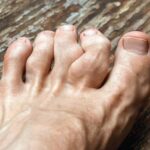Treat to Target in Gout Monitoring & achievement of target serum urate levels By Jing Li & Gabriela Schmajuk, MD, MS Why was this study done? The ACR’s 2020 guideline for the management of gout recommends using a treat-to-target (T2T) approach to lower serum urate (SU). Using the ACR’s RISE registry, we examined the use…








